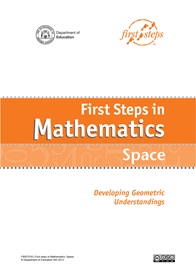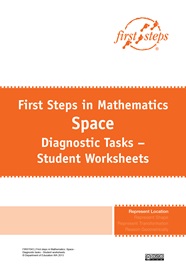This requires the ability to attend to the shape and placement of parts when visualising, drawing and modelling 2D and 3D shapes and an understanding of maps and plans, including the words and symbols used on them. It requires a sound understanding of the conventional words and symbols we use to talk about shapes and an understanding of the way in which we classify them using conventional geometric criteria. This also includes an understanding of how patterns and arrangements can be created through the systematic movements (or transformations) of shapes. Thus learning experiences should be provided that will enable students to represent locations, represent shapes, represent transformations and to reason geometrically.
As a result of their learning experiences, students should be able to achieve the following outcomes:
Represent Spatial Ideas
Visualise, draw and model shapes, locations and arrangements and predict and show the effect of transformations on them.
There are three parts to this outcome—Part A: Represent Location, Part B: Represent Shape, and Part C: Represent Transformation. Each is dealt with in a separate chapter.
Reason Geometrically
Reason about shapes, transformations and arrangements to solve problems and justify solutions


